The trip I went on in May with Rowan Tree Travel to southwestern England was so wonderful that I had to go again on a similar trip in northern England at the end of September. A Wool Lover’s Visit to the North of England took us through the Yorkshore Dales and the Lake District as well as the Northumberland coast. I’d never visited this part of England before, and it was truly an amazing experience.
Halifax and Piece Hall
Our group met at the Manchester airport and headed out toward Halifax. Along the way, we stopped at Dunham Massey, a Georgian home and National Trust site, to stretch our legs in the beautiful grounds and gardens. After a stroll, I grabbed a cup of tea from the café and sat down to enjoy my first cup of tea for this trip overlooking the grounds. It felt wonderful to be there.
We spent the afternoon at Piece Hall, a Georgian cloth hall established in 1779, and learned about the textile trade in Yorkshire from the Middle Ages through the early nineteenth century. This is the place where people brought their cloth to sell in the late 18th century, either renting a small room or setting up in the middle of square. Much of the building has been preserved and today, along with the historical parts, it is set up with shops and some restaurants. The square is a space for the community to use and also hosts events and concerts.
We stayed this night and the following at Holdsworth House, a Jacobean manor house built around 1633.
British Breeds with Zoe Fletcher
We had a workshop from Zoe Fletcher, aka The Woolist, who has studied all 72 pure breed British sheep breeds and has a PhD in British Wool. She also explained many of the projects she’s involved with, several of which we got to see later in the trip.
Shibden Hall, Lonk Sheep, and Heptonstall
Then we visited Shibden Hall, which was owned by Anne Lister aka Gentleman Jack. She lived in the early 19th century and lived a rather full life, which she detailed in her diaries, including sections written in code.
After that we met Edward Sutcliffe, a sheep farmer, and went to his farm where he and his wife Laura raise Lonk sheep (local to Yorkshire) and Whiteface Woodland sheep. Both are rare breeds. They are part of a project (along with Zoe Fletcher) called Wool Circle which uses the sheep from their wool, which is sent to a nearby mill to be processed. The yarn is then used by Nic Corrigan in her machine knitting. (They also sell the yarn.) So we met Nic as well and got to tour her studio as well as got a history walk of her village, Heptonstall, from her husband, which included the cemetery where Sylvia Plath is buried. We finished off the evening with dinner in their local pub.
Durham Cathedral
On our day to visit Durham Cathedral, we almost didn’t get to go inside because it was matriculation day for new students at the university and the cathedral was closed except for between 12 and 1. We arrived at 12:19! Very glad we were able to go in because it was absolutely stunning.
KnitLab North
At KnitLab North, they are helping small wool producers create yarn and design knitted items using knitting machines and small batches to get them started with a business (rather than just tossing out the fiber as often happens in the UK!). They offer a lot of business advice as well. We got to see one knitting machine in action, which creates a whole garment (no seams) all in one go. (This one was the first in a new design and it still had some small things that need tweaking.) It took the machine just 25 minutes to make this sweater. And the machines can do so much (even brioche!)
We had dinner at a pub (we just missed the Pub Quiz) and ate sticky toffee pudding which was absolutely delicious!
Whistlebare Farm and Alnwick
We started the day in a small village by the North Sea not too far from Bamburgh Castle. We also drove by the island of Lindisfarne.
We headed out to Whistlebare Farm, which raises angora goats (mohair) and Wensleydale sheep, where we met Alice. There are also working ponies and some dairy goats. There is a shop on the farm with gorgeous yarn and notions and some finished items.
We then drove back toward Bamburgh castle and had a walk down to the sea.
Then off to the town of Alnwick, where we got to explore the castle, gardens, and town. I spent most of my time exploring the castle inside and out (sadly no pictures allowed inside). It was really incredible to see the history of the Percy family which has owned this castle for hundreds and hundreds of years.
Then we spent a good chunk of time in Barter Books, which is a large used and antiquarian bookshop house in a Victorian railroad station. It was so full of treasures. I picked up two volumes (not from the same set) of Tennyson’s Idylls of the King, one from 1863 and the other from 1872.
Dinner was at the Tree House Restaurant, which is built in an actual treehouse.
Fine Fettle Fibers and Our Own Castle
We started the day off by visiting a fabulous yarn shop, Fine Fettle Fibers in Felton, which stocks a lot of local and British wool. I bought a bit…but had to have it shipped as it wouldn’t fit in my suitcase!
We did have afternoon plans but it was something mostly outdoors and the weather wasn’t quite suitable that day so we skipped that and headed toward the castle where we stayed for the next two nights. Our own castle! My room in the castle was glorious. And the drawing room where we sat and knit was quite cozy.
We stopped for lunch in the town of Barnard Castle where I had a delicious toasted ham and cheese sandwich. We got to walk around the area a bit.
Yorkshire Dales with Ann Kingstone
Breakfast at our castle and then off to explore the Yorkshire Dales (valleys). Most of the sheep we saw along the way were Swaldale and Cheviot. Lots of hills and valleys.
Our first stop was the village of Dent. It has a long history of many inhabitants making a living through knitting. Many of the buildings were built in the 18th century and the streets are cobbled. Our guide, Ann Kingstone (knitwear designer and lifelong resident of Yorkshire), took us around the village and showed us various houses and points of interest especially for knitting. Adam Sedgwick was one of the most famous town residents, and he is largely responsible for developing geology as an academic field.
George Hodson is known as the Dent Vampire. He was disinterred and reburied with a metal stake through his heart.
We drove further up the Dales and briefly stopped to see a viaduct. Then we had lunch at a place called the Wensleydale Creamery. I had a fairly simple ham and cheese toasted sandwich but the cheese was from the creamery and was quite good.
In the afternoon we visited the Dales Countryside Museum, which has a textile display among other areas. We got to see a history of knitting in the Dales as well as many examples of knitting sheaths and other knitting tools. There were also several examples of knitted gloves.
Along the drive back to our castle, we took a quick photo stop outside the ruins of Pendragon Castle, a 12th century Norman keep.
Sheepfold and the Wool Clip
We checked out of our castle and drove a bit to the farm (Sheepfold) of James and Alice who have a small flock of Manx Loaghtans, which are a rare primitive breed.
After having a lovely time at her farm, we went to a shop called The Wool Clip which is a cooperative of artists who work with various fiber arts.
Then after lunch, we took a walk along the Riverside in Caldbeck Village up to The Howk, which is the ruins of a bobbin mill.
Into the Lake District
Into the Lake District we drove, stopping by the Castlerigg Stone Circle, a Neolithic, nearly intact circle (and sheep were wandering freely in the field with the circle). I had finished my sweater the day before and so got to take a picture of me and my sweater in the stone circle. This was a sweater from yarn that I got during my May trip to England.
For the remaining three nights of our trip, we stayed at Lindeth Howe Hotel (which used to be the home of Beatrix Potter’s mother).
Herdwick Ltd. and Exploring the Lake District
The next morning we met with Mandy Marshall, a certified Blue Badge Guide, who spent time living in/caretaking Beatrix Potter’s former home, Castle Cottage. She told us all about Potter’s contribution to the Lake District and the sheep and how important she was in the preservation of the land and livestock. Mandy is a supporter of the area’s Herdwick sheep breeds and has a business offering tweed items spun from their heavy-duty fleeces, Herdwick Ltd. And we got to visit her shop and spend some time in the village of Grasmere.
In Grasmere I was so excited to see a shopfront for Herdy, a brand I’ve followed and a shop I’d always wanted to visit. Seeing the smiling sheep face on all the products made me so happy!
We drove up to the Blackwell House, which was built and designed in the Arts and Craft movement style. I think my favorite part was seeing the different look/color of each fireplace in the rooms. We had lunch in the cafe, where I had a scone (with clotted cream and jam) and tea.
After that, we went to the village of Ambleside and got to shop a bit. There was definitely a lot of Beatrix Potter stuff around town. I also found a second Herdy shop! I went into an antique shop and several other tourist shops, and I managed to find a few items to add to my sheep collection. I also got an ice cream cone which I almost dropped, but managed to catch. Back at the hotel, we spent the evening knitting with a gorgeous view.
Dove Cottage
The next morning we went to Dove Cottage, home of William Wordsworth and his sister Dorothy. The cottage itself was quite small and the lighting was not great, especially on a rainy day. I can’t imagine three adults and three children and sometimes guests in that cottage. But the exhibit with the manuscripts and letters was wonderful to see.
We stopped by the Grasmere Gingerbread shop which is tiny but cute. I got a piece of gingerbread. Very good but quite spicy. Will be something to nibble on here and there, definitely couldn’t eat it all at once.
Lunch was at Bank Ground Farm, a place this tour group often stays at. The views were wonderful—when the weather was clear, which was not happening the day we visited.
Yew Tree Farm and Herdwicks!
Then we went to Yew Tree Farm and learned about the farm, which is a National Trust farm, and the Herdwick sheep. (I love these sheep. I think their faces are so adorable.) Jo told us about the sheep and then took us to her “ambassador” flock where we got to pet and feed the sheep. Loved that!
More Tours Available with Rowan Tree Travel
I am looking forward to going on another tour with Rowan Tree Travel as both of these tours have been fabulous. They offer tours in several areas such as the British Isles (England, Scotland, Wales), Ireland, Denmark and the Faroe Islands, Iceland, Greece, Canada, and the U.S. They are also scouting new locations to add tours in the future. If you are looking for a tour with a fiber friendly basis and a wonderful group of fiber enthusiasts, I highly recommend checking out this company.


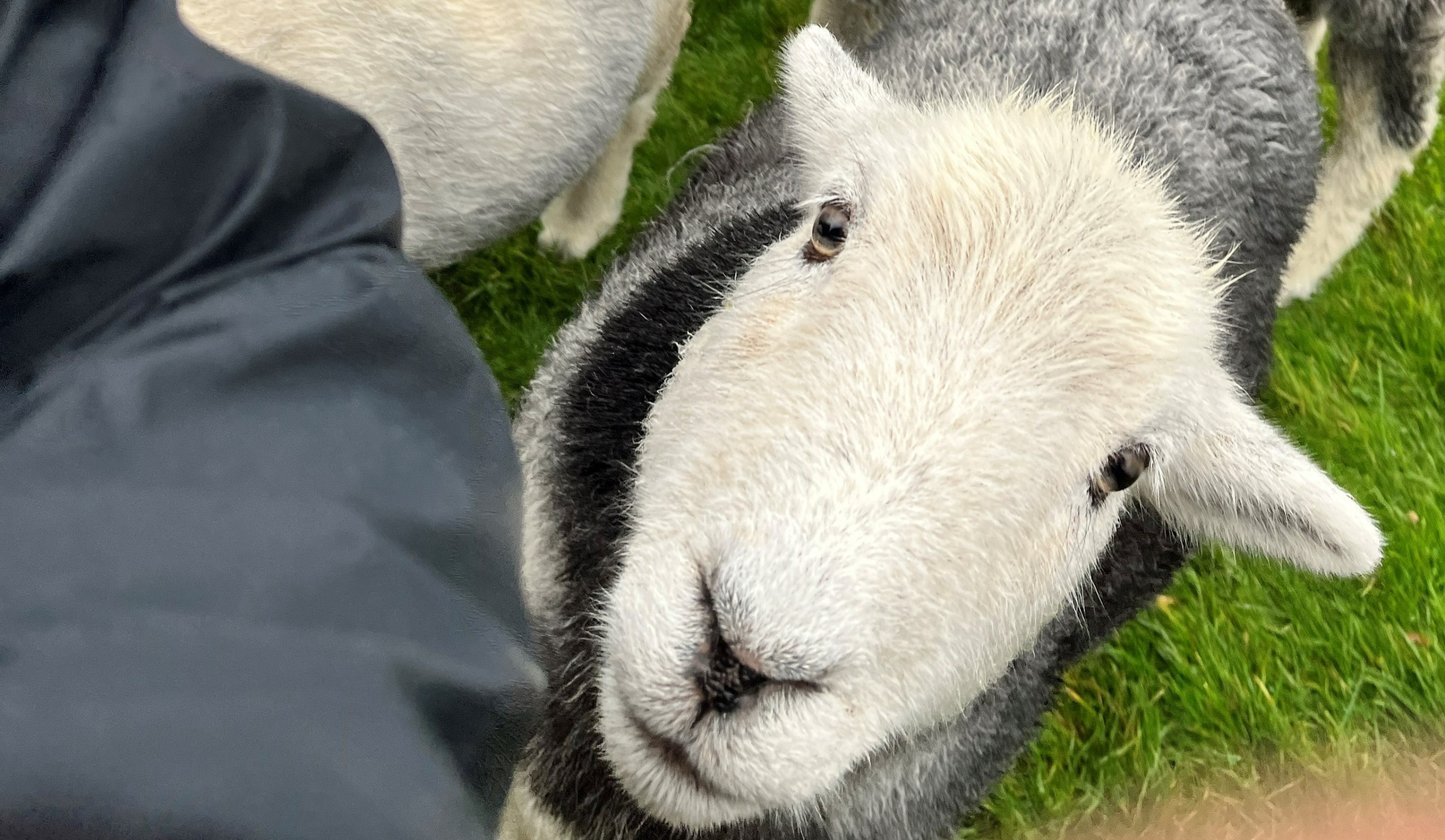
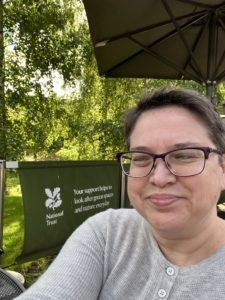
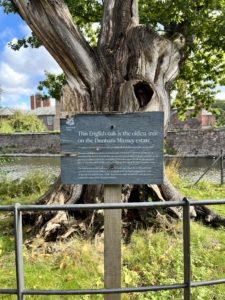
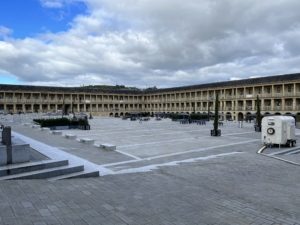
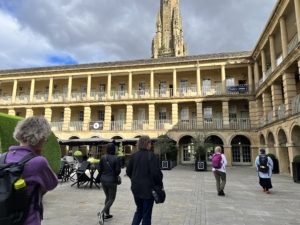
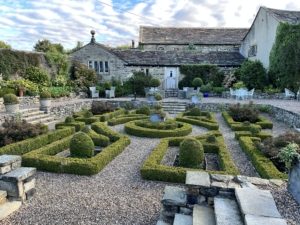
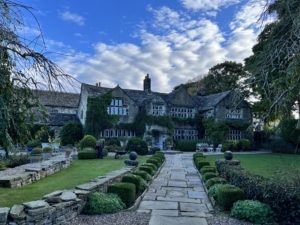

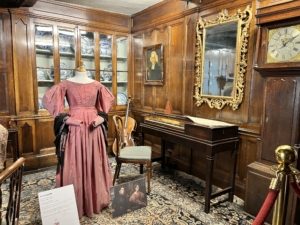
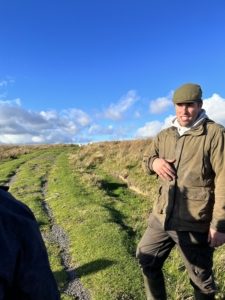
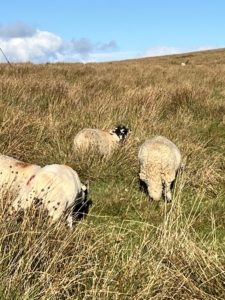
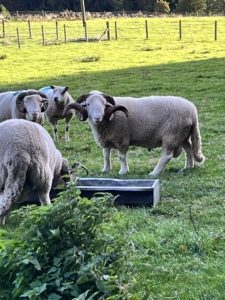

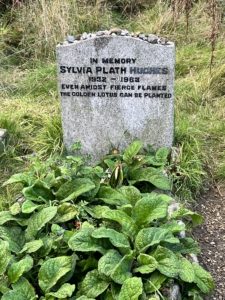












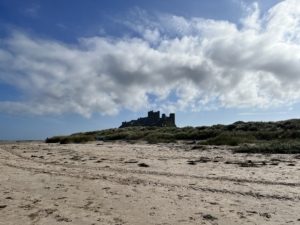
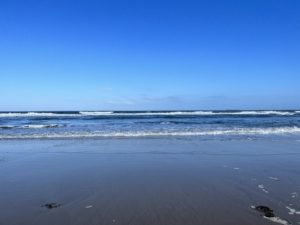
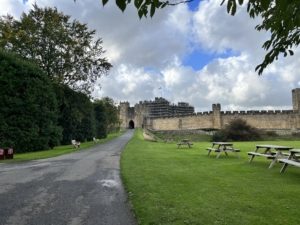
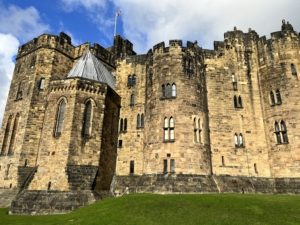
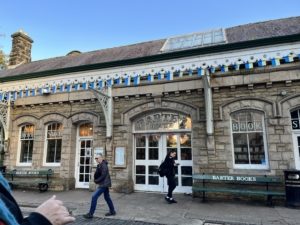
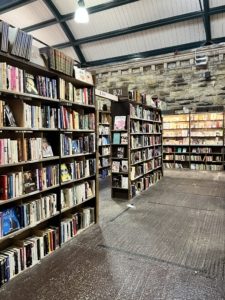
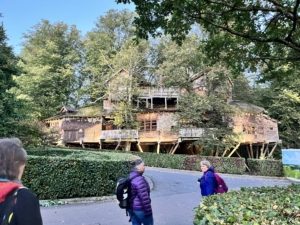







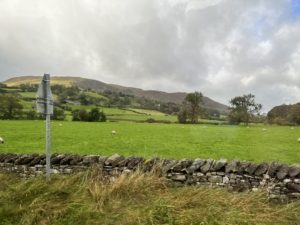




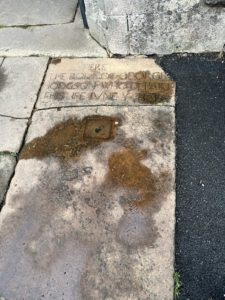




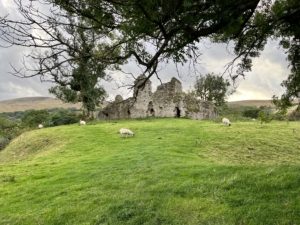



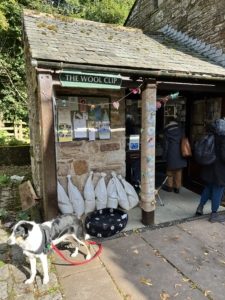
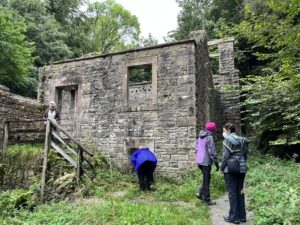
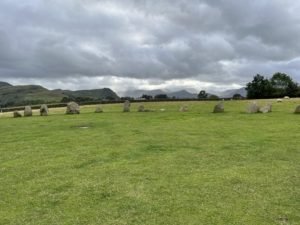
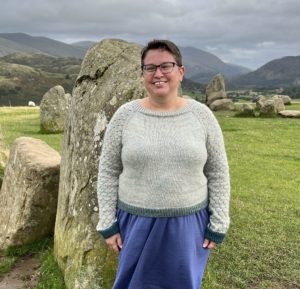
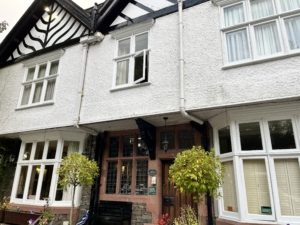



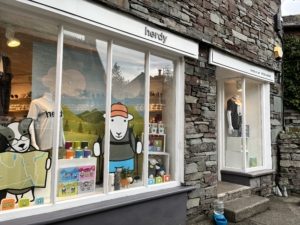




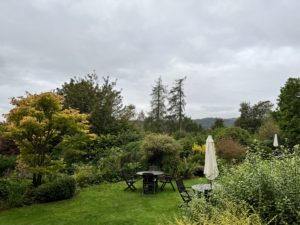
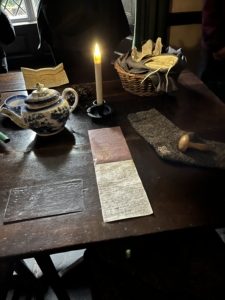
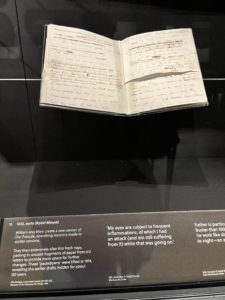
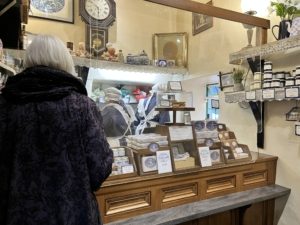






Leave a Reply
Want to join the discussion?Feel free to contribute!